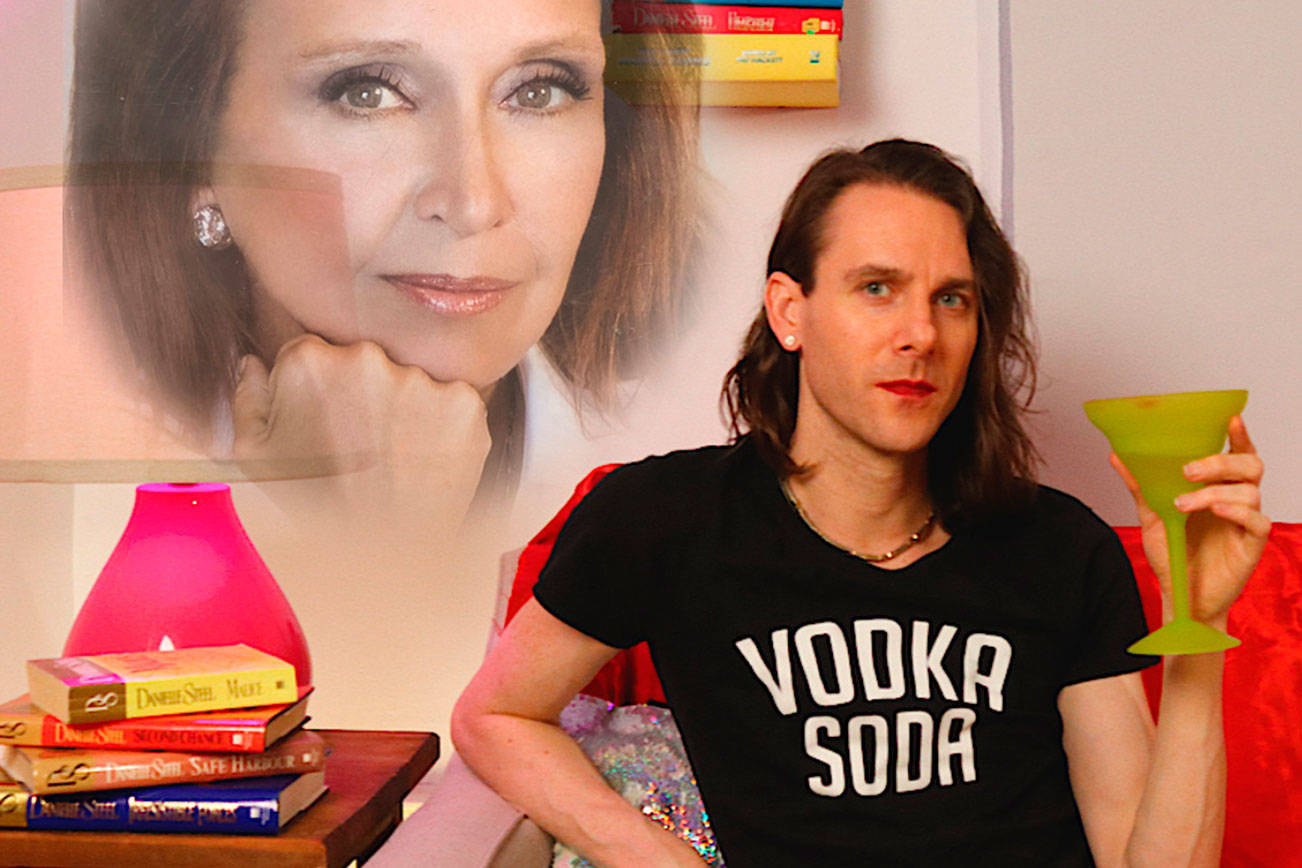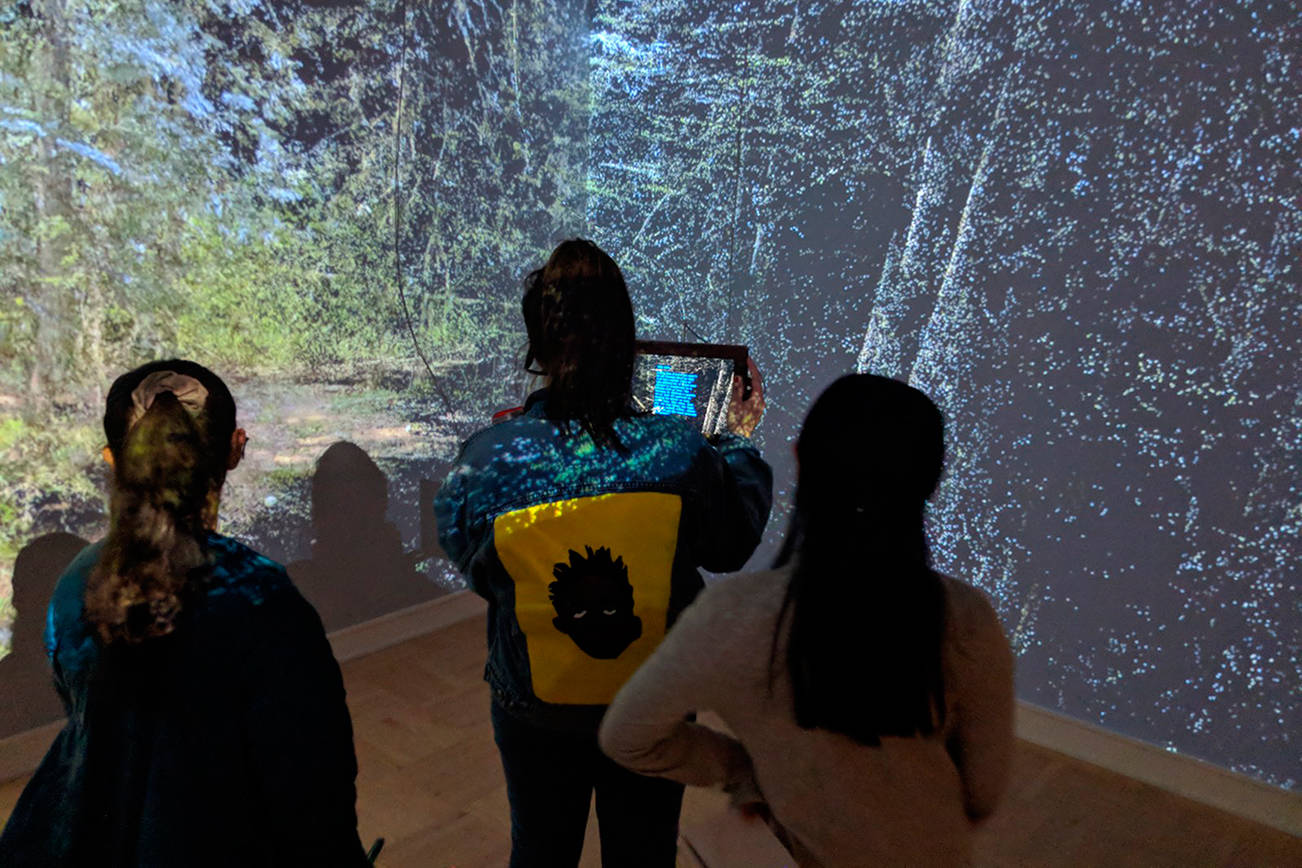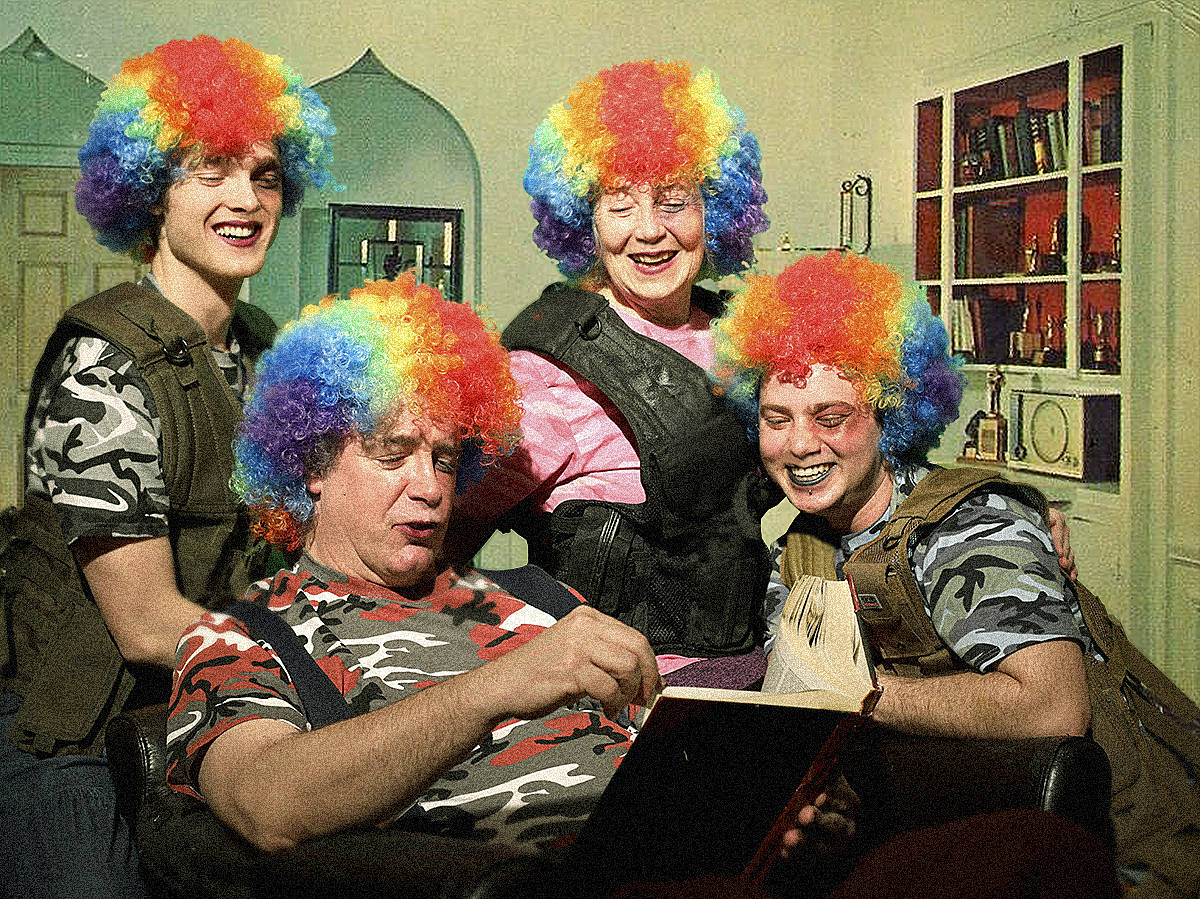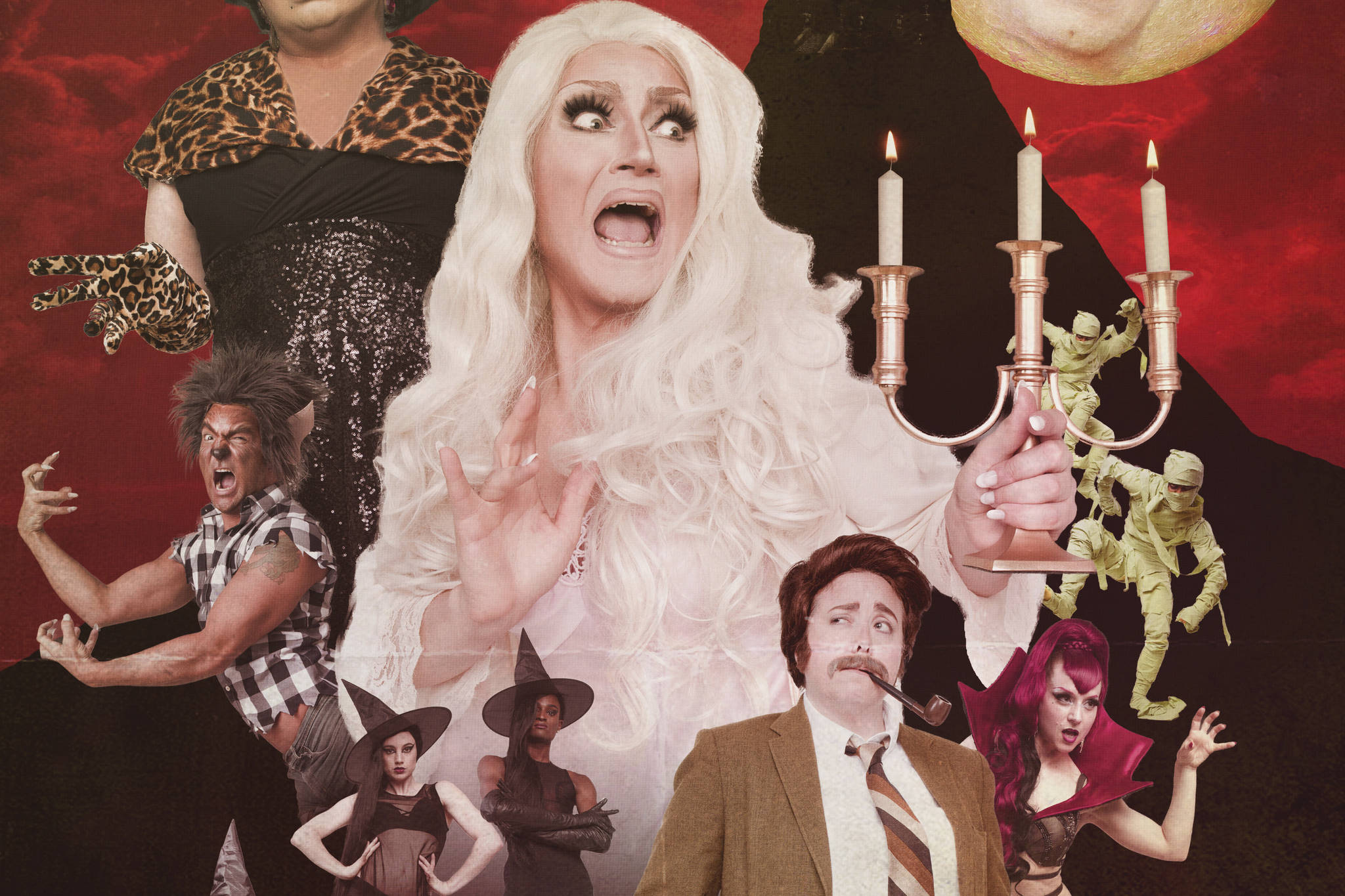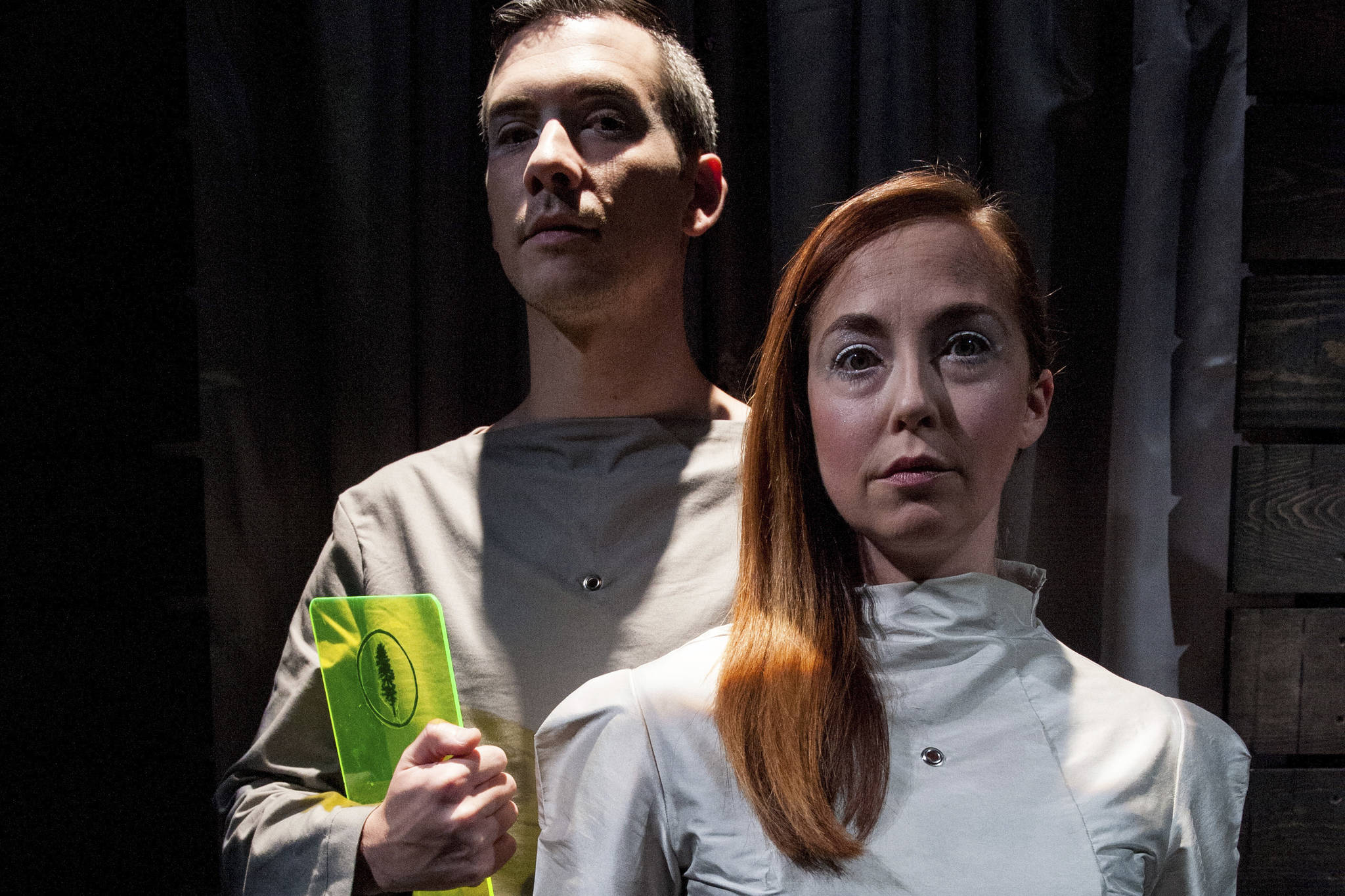“My grandmother has read every Danielle Steel novel that has ever been published. That is 141 novels,” artist Patty Gone shares with me over the phone on a sunny Sunday afternoon in February. “Around the early ’90s, when my grandfather retired, he started going to the library, and he would get romance novels for her. He started keeping this ongoing list of all the books, because she would go through them so quickly that he would get confused as to which ones he had gotten for her or not. So at this point, he’s been maintaining the list for longer than 20 years. She has read thousands of romance novels. I am interested in what the accumulation of all these books is… on her, other women, and me.”
Gone’s reflections on the role of romance novels in larger culture, the artist’s relationship with their grandmother, and the queer undertones of mass-market paperback femininity will be presented in Gone’s upcoming chapbook, Love Life.
Patty Gone is a multimedia artist based in New York City. They are the March artist-in-residence at Mount Analogue, the small-press book shop and interdisciplinary gallery space in Pioneer Square. Gone’s multipronged residency includes a reading of Love Life on March 7 to open their art installation (which runs March 7—22), a screening of their episodic video faux drama Painted Dreams (March 21), a workshop on how to write a romance novel, personalized tarot-style readings directly from Danielle Steel novels, and a Seattle Public Library gathering with avid Steel readers.
For Gone’s residency, artgoers can expect to enter into a Danielle Steel wonderland. The installation is set to include a life-size remake of Steel’s own lavish desk made of three giant copies of her own books and a video featuring glamorous author portraits of Steel. Love Life is a 60-page dive into Done’s relationship with, and research on, Steel’s novels. The chapbook will be styled similarly to a classic romance novel: bright colors, cheesy author photo, and all.
Some of the most striking parts of Love Life are Gone’s letters to Steel, weaving their grandmother’s story and their own into paragraphs of philosophical questions for Steel to hopefully answer. “All of my work tries to… undermine people’s tastes and show them that there are interesting qualities even in the most mass-market cultural products,” says Gone.
Talking with Gone, I dropped the disappointing fact that I have never read a Danielle Steel novel. “Becs, you’re missing out,” they said in an equally serious and sarcastic tone, “they are the cornerstone of heteronormativity.” Each of Steel’s books have a similar story arch: A female protagonist leaves an unhappy relationship, finds a new relationship (often with a wealthier man), and “that relationship is crystalized into the happy ending, cue end of book.”
So what is the catch? Who are these readers? Danielle Steel is the best-selling American fiction writer of all time. No joke—she’s moved 800 million copies. (For comparison, that slouch Stephen King has sold “only” 350 million. Heck, J. K. Rowling is “only” at 500 million.) Why do so many people read these books?
“The people who are reading them… are mostly in social situations [where] the romance novel is their escape,” Gone says. “The romance novel is a time for themselves. They get to live vicariously with these women [in the novels] who are very close to them… women who are also in the capitalist structure, but have it a little better off,” says Gone, citing a research study that Janice Radway conducted on romance-novel enthusiasts in the Midwest in the 1980s.
Yet Gone’s exploration of romance novels in Love Life is much more than a critique, it’s an investigation into the development of their own identity. “A lot of the art that I’ve been working on thinks about… these mass-culture feminine touchstones and how they maybe seeped into my consciousness in ways that maybe didn’t for other people,” says Gone. Surrounded by romantic novels and soap operas growing up, Gone found these narratives to be one source material for their own femininity. “Anytime that I wasn’t at school I would be at [my grandmother’s] house spending time with her and her hobbies. My mom used to say: I wish I made you and your sister go to the pool and be more social as kids, and I’m like, ‘No, Mom, this is all for the best,’ ” Gone says with a laugh.
In one of my favorite Love Life passages, Gone writes: “Danielle, I’ve always loved art more than religion, philosophy, science… even other people (oftentimes to my own detriment), and to love art that much without any way to think of myself as beautiful felt, at times, like being strangled by my own hair. Reading you gives me the vicarious experience of being a rich, basic woman exiting Louis Vuitton, clutching my Hermes Birkin as I cross Fifth Ave., en route to browsing black shifts at Chanel. I can live my little imaginary life and as fucked up as that is… I love it.”
Patty Gone: Love Life
March 7–22 | Mount Analogue | mount-analogue.com
